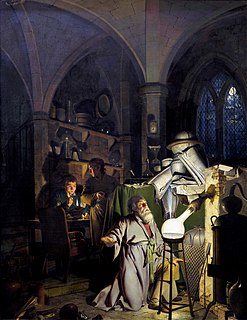 W
WThe Alchemist Discovering Phosphorus is a painting by Joseph Wright of Derby originally completed in 1771 then reworked in 1795. The full title of the painting is The Alchymist, in Search of the Philosopher's Stone, Discovers Phosphorus, and prays for the successful Conclusion of his operation, as was the custom of the Ancient Chymical Astrologers. It has been suggested that The Alchymist refers to the discovery of phosphorus by the Hamburg alchemist Hennig Brand in 1669. This story was often printed in popular chemical books in Wright's lifetime, and was widely known.
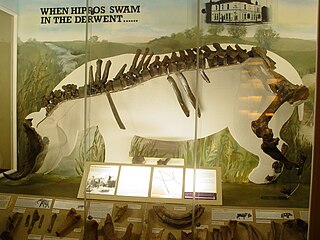 W
WThe Allenton Hippo is a substantive hippopotamus skeleton that was found in Allenton, Derby, England, in 1895. The skeleton is exhibited in Derby Museum and Art Gallery and is 3 metres (9.8 ft) in length. It is celebrated today in a sculpture near to where the skeleton was discovered.
 W
WAshford Black Marble is the name given to a dark limestone, quarried from mines near Ashford-in-the-Water, in Derbyshire, England. Once cut, turned and polished, its shiny black surface is highly decorative. Ashford Black Marble is a very fine-grained sedimentary rock, and is not a true marble in the geological sense. It can be cut and inlaid with other decorative stones and minerals, using a technique known as pietra dura.
 W
WThe Blacksmith's Shop is a recurring theme of five paintings by Joseph Wright of Derby. The version in his home town was originally completed in 1771.
 W
WThomas Borrow and Ann Borrow are two paintings by Joseph Wright of Derby from 1762-63.
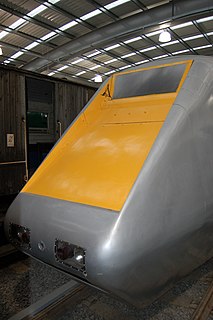 W
WThe British Rail Research Division was established in 1964 directly under the control of the British Railways Board, moving into purpose-built premises at the Railway Technical Centre in Derby. The intention was to improve railway reliability and efficiency, while reducing costs and improving revenue. In so doing it became recognised as a centre of excellence and, in time, was providing consultancy to other railways around the world. While it became famous for the Advanced Passenger Train (APT), its activities extended into every area of railway operation. The theoretical rigor of its approach to railway engineering superseded the ad hoc methods that had prevailed previously.
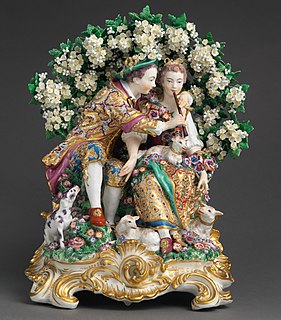 W
WChelsea porcelain is the porcelain made by the Chelsea porcelain manufactory, the first important porcelain manufactory in England, established around 1743–45, and operating independently until 1770, when it was merged with Derby porcelain. It made soft-paste porcelain throughout its history, though there were several changes in the "body" material and glaze used. Its wares were aimed at a luxury market, and its site in Chelsea, London, was close to the fashionable Ranelagh Gardens pleasure ground, opened in 1742.
 W
WCodnor Castle is a ruined 13th-century castle in Derbyshire, England. The land around Codnor came under the jurisdiction of William Peverel after the Norman conquest. Although registered as a Scheduled Ancient Monument and Grade II Listed Building the site is officially, as at 2016, a Building at Risk.
 W
WThe Creswellian is a British Upper Palaeolithic culture named after the type site of Creswell Crags in Derbyshire by Dorothy Garrod in 1926. It is also known as the British Late Magdalenian. According to Andreas Maier: "In current research, the Creswellian and Hamburgian are considered to be independent but closely related entities which are rooted in the Magdalenian." The Creswellian is dated between 13,000 and 11,800 BP and was followed by the most recent ice age, the Younger Dryas, when Britain was at times unoccupied by humans.
 W
WThe Derby Exhibition of 1839 was the first exhibition in Derby. It was held at the town's Mechanics' Institute, which later became known as Albert Hall. The exhibition was in line with the founding values of the Institute, which were to extend the spread of knowledge among the people of Derby. The institute had organized a wide range of events since 1825, including lectures, concerts, and displays. The exhibition followed the first such organised by Manchester Mechanics Institute in 1837 and Derby's was one of several that were organised that year in English industrial towns and cities. Derby's exhibition had a profound impact and was one of the factors leading to the foundation of the Museum and Library in 1878. Derby Museum and Art Gallery, which is next door to what was the Mechanics Institute building, now holds many of the objects from the exhibition.
 W
WThe production of Derby porcelain dates from the second half of the 18th century, although the authorship and the exact start of the production remains today as a matter of conjecture. The oldest remaining pieces in the late 19th century bore only the words "Darby" and "Darbishire" and the years 1751-2-3 as proof of place and year of manufacture. More important is the fact that the production of porcelain in Derby predates the commencement of the works of William Duesbury, started in 1756 when he joined Andrew Planche and John Heath to create the Nottingham Road factory, which later became the Royal Crown Derby.。
 W
WDerby Silk Mill, formerly known as Derby Industrial Museum, is a museum of industry and history in Derby, England. The museum is located on the former site of Lombe's Mill, a historic silk mill which marks the southern end of the Derwent Valley Mills World Heritage Site. The site opened as Derby’s Industrial Museum, on 29 November 1974. A £17 million redevelopment scheme started in 2016, with the museum due to reopen under the new name of the Museum of Making in autumn 2020.
 W
WDovedale by Moonlight, 1784, is one of five paintings by Joseph Wright of Derby which uses the picturesque valley of Dovedale as its subject. These paintings were sometimes made as pairs with one showing the view by day and the other by moonlight. Wright admitted that he had not observed this scene directly, "Moon lights & fire lights are but a sort of work with me for I cant with impunity go out at night and study the former, & the latter I have seen but once, and at a time too, when I thought not of painting such effects."
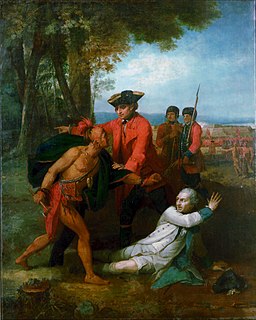 W
WGeneral Johnson Saving a Wounded French Officer from the Tomahawk of a North American Indian is a painting by Benjamin West, completed between 1764 and 1768. It depicts a scene as observed by a native of Pennsylvania, soon after the actual events shown. It is in the collection of Derby Museum and Art Gallery.
 W
WFrank Gresley (1855–1936) was a British artist. He painted mainly landscapes, of which the best known are those of the River Trent at Swarkestone, Barrow upon Trent and Ingleby, Derbyshire. His father, James Stephen Gresley, was an artist, and his two sons Harold and Cuthbert also became artists.
Harold Gresley was a British artist, following his father and grandfather. He was a painter of landscapes and portraits in watercolour and oil. He served in the Royal Fusiliers in the First World War and was awarded the Distinguished Conduct Medal. He has a substantial number of paintings in Derby Museum and Art Gallery.
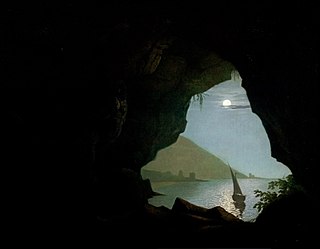 W
WGrotto in the Gulf of Salerno is the subject of at least four paintings completed by Joseph Wright of Derby following his visit there in 1774. The paintings show the different lighting at different times of the day.
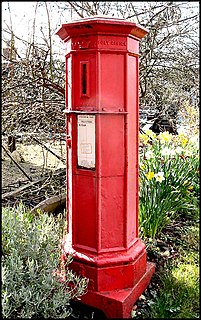 W
WAndrew Handyside and Company was an iron founder in Derby, England, in the nineteenth century.
 W
WThe Hanson Log Boat was a Bronze Age boat found in a gravel pit in Shardlow in Derbyshire. This log boat is now in Derby Museum and Art Gallery.
 W
WHenry Harpur-Crewe (1828–1883) was an English clergyman and naturalist. He was rector of Breadsall and then Drayton Beauchamp from 1860 until his death.
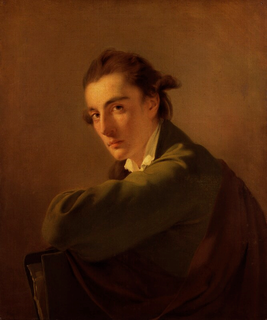 W
WRichard Hurlstone or Richard Hurleston was a British portrait painter known for being a pupil of Joseph Wright of Derby. He went to Italy with Wright and his wife. He returned and died young after being hit by lightning on Salisbury Plain.
 W
WIndian Widow is a painting by Joseph Wright of Derby, completed in late 1783 or early 1784 and first shown in his solo exhibition in London in 1785. The painting is now in a private collection owned by Dr. Christine I. Oaklander.
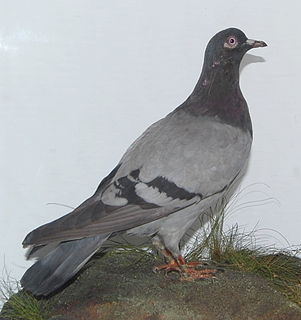 W
WThe King of Rome was a successful racing pigeon, winning a 1,001-mile (1,611 km) race from Rome, Italy to Derby, England, in 1913. Bred and trained in England, it was owned by Charlie Hudson of Derby. It set a new long-distance record for a racing pigeon of England.
 W
WMatlockite is a rare lead halide mineral, named after the town of Matlock in Derbyshire, England, where it was first discovered in a nearby mine. Matlockite gives its name to the matlockite group which consists of rare minerals of a similar structure.
 W
WThe Midland Railway (MR) was a railway company in the United Kingdom from 1844. The Midland was one of the largest railway companies in Britain in the early 20th century, and the largest employer in Derby, where it had its headquarters. It amalgamated with several other railways to create the London, Midland and Scottish Railway at grouping in 1922.
 W
WA Philosopher by lamplight is a painting by Joseph Wright of Derby. It is not known when Wright painted the picture, but it was first exhibited in 1769 in London with the Society of Artists. This was one of the earliest of many lamplight or candlelight paintings and portraits for which Wright is famed.
 W
WA Philosopher Lecturing on the Orrery, or the full title, A Philosopher giving that Lecture on the Orrery in which a lamp is put in place of the Sun, is a 1766 painting by Joseph Wright of Derby depicting a lecturer giving a demonstration of an orrery — a mechanical model of the solar system — to a small audience. It is now in the Derby Museum and Art Gallery The painting preceded his similar An Experiment on a Bird in the Air Pump.
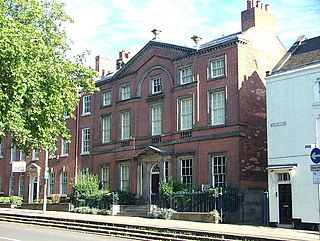 W
WPickford's House Museum of Georgian Life and Costume is in Derby, England. It is named after architect Joseph Pickford, who built it as his family home in 1770. It was opened as a museum in 1988. The building is Grade I listed.
 W
WHenry Lark Pratt (1805–1873) was an English painter who trained in the porcelain industry.
 W
WA Prospect of Derby is a 1725 painting by an unknown artist that shows the layout of Derby in the early 18th century.
 W
WRomeo and Juliet: the Tomb Scene is a painting by Joseph Wright of Derby, completed by 1790, exhibited in 1790 and 1791, shown in the Derby Exhibition of 1839 in the Mechanics' Institute, and now displayed in Derby Museum and Art Gallery. The painting exhibits Wright's famed skill with nocturnal and candlelit scenes. It depicts the moment in Shakespeare's Romeo and Juliet when Juliet, kneeling beside Romeo's body, hears a footstep and draws a dagger to kill herself. The line is "Yea, noise? Then I'll be brief. O happy dagger!"
 W
WThe Royal Crown Derby Porcelain Company is the oldest or second oldest remaining English porcelain manufacturer, based in Derby, England. The company, particularly known for its high-quality bone china, having produced tableware and ornamental items since approximately 1750. It was known as 'Derby Porcelain' until 1773, when it became 'Crown Derby', the 'Royal' being added in 1890. The factory closed down in the past under Royal Doulton ownership, but production was revived under the renewed ownership of Hugh Gibson and Pearson family.
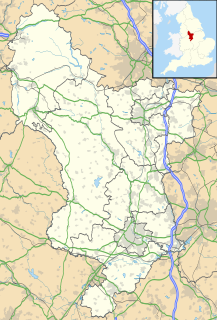 W
WStrutt's Park Roman Fort was a Roman fort in Strutt's Park, a suburb of Derby in Derbyshire, England. It was built around the year 50 and replaced, probably between the years 75 and 80, by a new fort at Little Chester on the opposite bank of the River Derwent.
 W
WCharles Edward Louis John Casimir Sylvester Severino Maria Stuart was the elder son of James Francis Edward Stuart, grandson of James II and VII, and the Stuart claimant to the throne of Great Britain after 1766 as "Charles III". During his lifetime, he was also known as "the Young Pretender" and "the Young Chevalier"; in popular memory, he is "Bonnie Prince Charlie". He is best remembered for his role in the 1745 rising; his defeat at Culloden in April 1746 effectively ended the Stuart cause, and subsequent attempts failed to materialise, such as a planned French invasion in 1759. His escape from Scotland after the uprising led to his portrayal as a romantic figure of heroic failure.
 W
WA tatanua is a type of traditional mask made by the natives in the province of New Ireland, Papua New Guinea. The masks are made of wood and other natural materials and used in funeral ceremonies called malagan.
 W
WErnest Townsend was a portrait artist from Derby in England.
 W
WVesuvius in Eruption is the subject of a series of thirty paintings and at least one preliminary sketch by Joseph Wright of Derby, who travelled in Italy in the years 1773-1775. It appears that whilst Wright was in Italy Vesuvius was not erupting.
 W
WVirgil's Tomb is the title of at least three paintings completed by Joseph Wright of Derby between 1779 and 1785.
 W
WWhite Watson was an early English geologist, sculptor, stonemason and carver, marble-worker and mineral dealer. In common with many learned people of his time, he was skilled in a number of artistic and scientific areas, becoming a writer, poet, journalist, teacher, botanist and gardener as well as a geologist and mineralogist. He kept extensive diaries and sketchbooks of his observations on geology, fossils and minerals, flora and fauna, and published a small but significant and influential number of geological papers and catalogues. As an artist he was well known locally for his silhouettes, both on paper and as marble inlays.
 W
WThe Whitehurst & Son sundial was produced in Derby in 1812 by the nephew of John Whitehurst. It is a fine example of a precision sundial telling local apparent time with a scale to convert this to local mean time, and is accurate to the nearest minute. The sundial is now housed in the Derby Museum and Art Gallery.
 W
WJohn Whitehurst FRS, born in Cheshire, England, was a clockmaker and scientist, and made significant early contributions to geology. He was an influential member of the Lunar Society.
 W
WJoseph Wright, styled Joseph Wright of Derby, was an English landscape and portrait painter. He has been acclaimed as "the first professional painter to express the spirit of the Industrial Revolution".